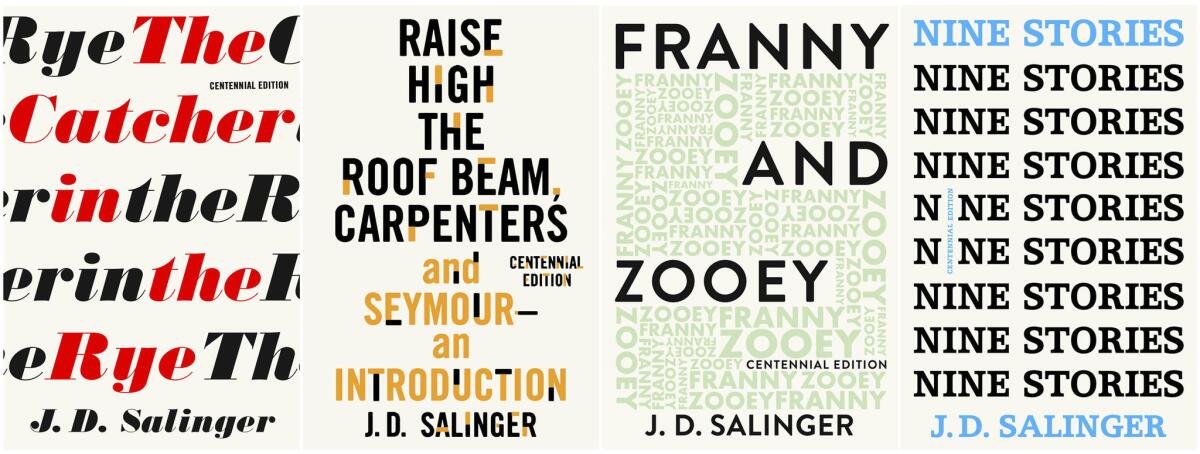J.D. Salinger’s books will be reissued for his centenary, while Joyce Maynard raises #MeToo questions
- Share via
Nearly 100 years after his birth, the late J.D. Salinger is returning to the place he hated most: the spotlight.
Little, Brown, Salinger’s publisher, announced it would “kick off a yearlong celebration” of the reclusive author of “The Catcher in the Rye,” who was born Jan. 1, 1919.
The celebration will start with the publication of new editions of Salinger’s four books this November. Along with his famous novel, Salinger published the short story collection “Nine Stories,” the book containing a novella and one story, “Franny and Zooey,” and the two-novella book, “Raise High the Roof Beam, Carpenters and Seymour: An Introduction” during his lifetime.
There were rumors of unpublished works that might see publication after his death in 2010, but so far, none have come to light.

The four Salinger books will be reissued in newly designed trade paperback format as well as in a box set of hardcovers.
The announcement of the centennial celebration coincided with the publication of an essay by Joyce Maynard, an author and Salinger’s former lover, in the New York Times.
In 1972, Maynard published an widely read essay in the New York Times Magazine billed as “an 18-year old looks back on life.” Salinger, who was 53, wrote her a letter in response.
“I had received a letter from J.D. Salinger in which he offered his admiration, friendship, mentorship and spiritual guidance,” she says now. “And, in subsequent letters and phone calls, urged me to leave college, come live with him (have babies, collaborate on plays we would perform together in London’s West End) and be (I truly believed this) his partner forever.” She did leave Yale and moved in with Salinger in New Hampshire, an affair that he ended after seven months.

Maynard wrote about her relationship with Salinger in the 1998 memoir “At Home in the World.” Maynard’s memoir was met with scathing critiques upon its publication, but she writes that she thinks it might be received differently today, seen through the lens of the #MeToo movement.
“We have come a long way ... from 1998,” she writes. “I am 64 now. In the decades since I published my story about those days and their enduring effect on my life, I have received many letters from readers. Some are from women with chillingly similar stories to share, of powerful older men who, when these women were very young, captured their exceedingly naïve trust, as well as their hearts, and altered the course of their lives.” She adds that there were other young women who said they had received letters like she did from Salinger, “an absolutely captivating letter, magical even — composed in a voice they recognized as that of Holden Caulfield.”
Little, Brown’s intention is to introduce that voice to a new generation of readers. “J.D. Salinger had a unique ability to connect with readers through a character’s voice — readers have often said, upon encountering his fiction for the first time, that they felt as if it had been written just for them,” Reagan Arthur, the publisher of Little, Brown, said in a news release. “We hope these reissued editions will help a new generation of readers discover the immense pleasures of reading his work.”
Salinger’s son, Matt, praised the celebration and also made reference to his father’s dislike of attention.
“My father hated birthdays, holidays and pretty much any planned or culturally mandated celebrations, and he’d certainly hate this centennial — but he loved writing and he loved his readers, and I hope his readers will be glad for an excuse to remember him in this way,” the younger Salinger said.
More to Read
Sign up for our Book Club newsletter
Get the latest news, events and more from the Los Angeles Times Book Club, and help us get L.A. reading and talking.
You may occasionally receive promotional content from the Los Angeles Times.







